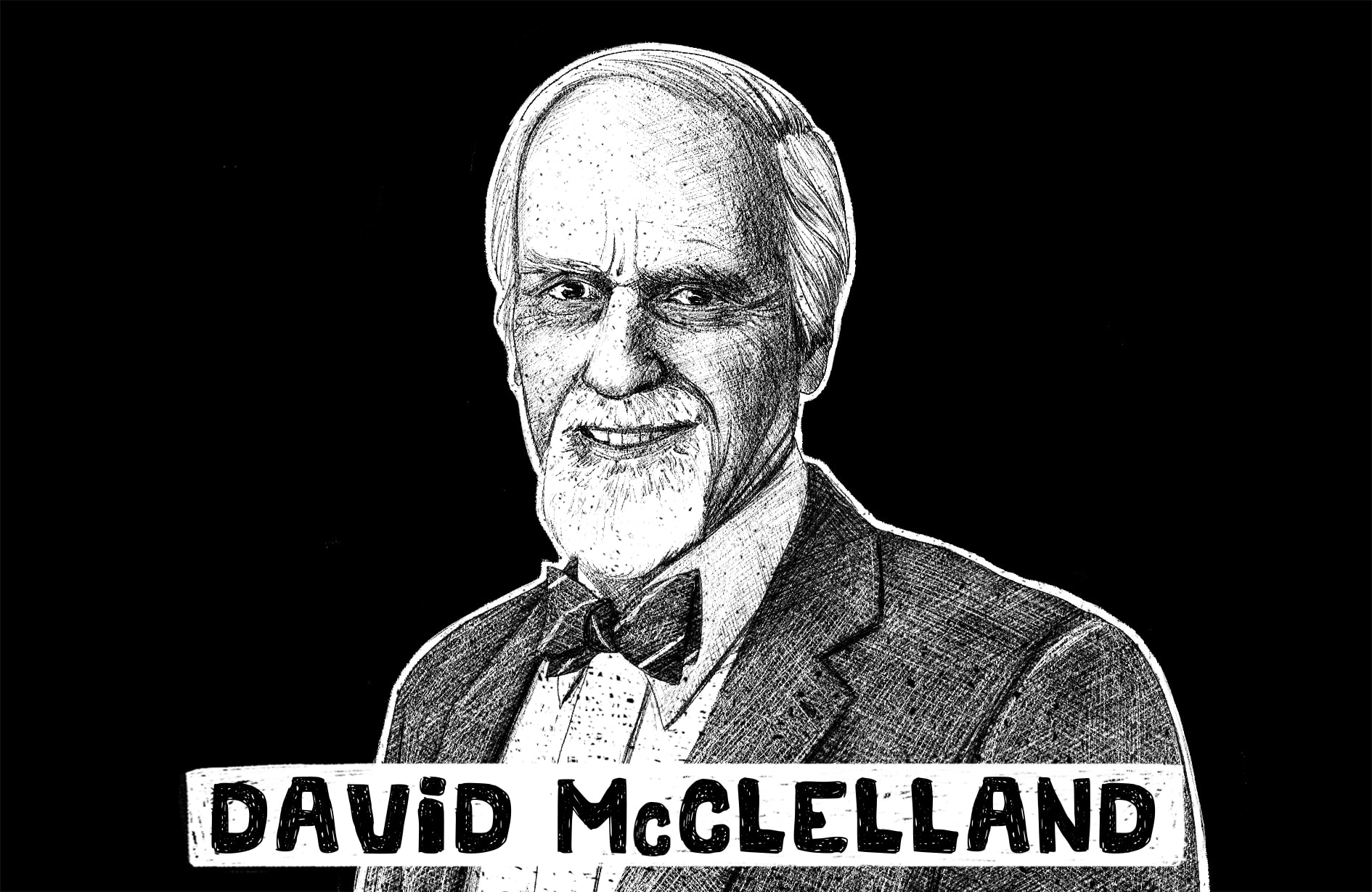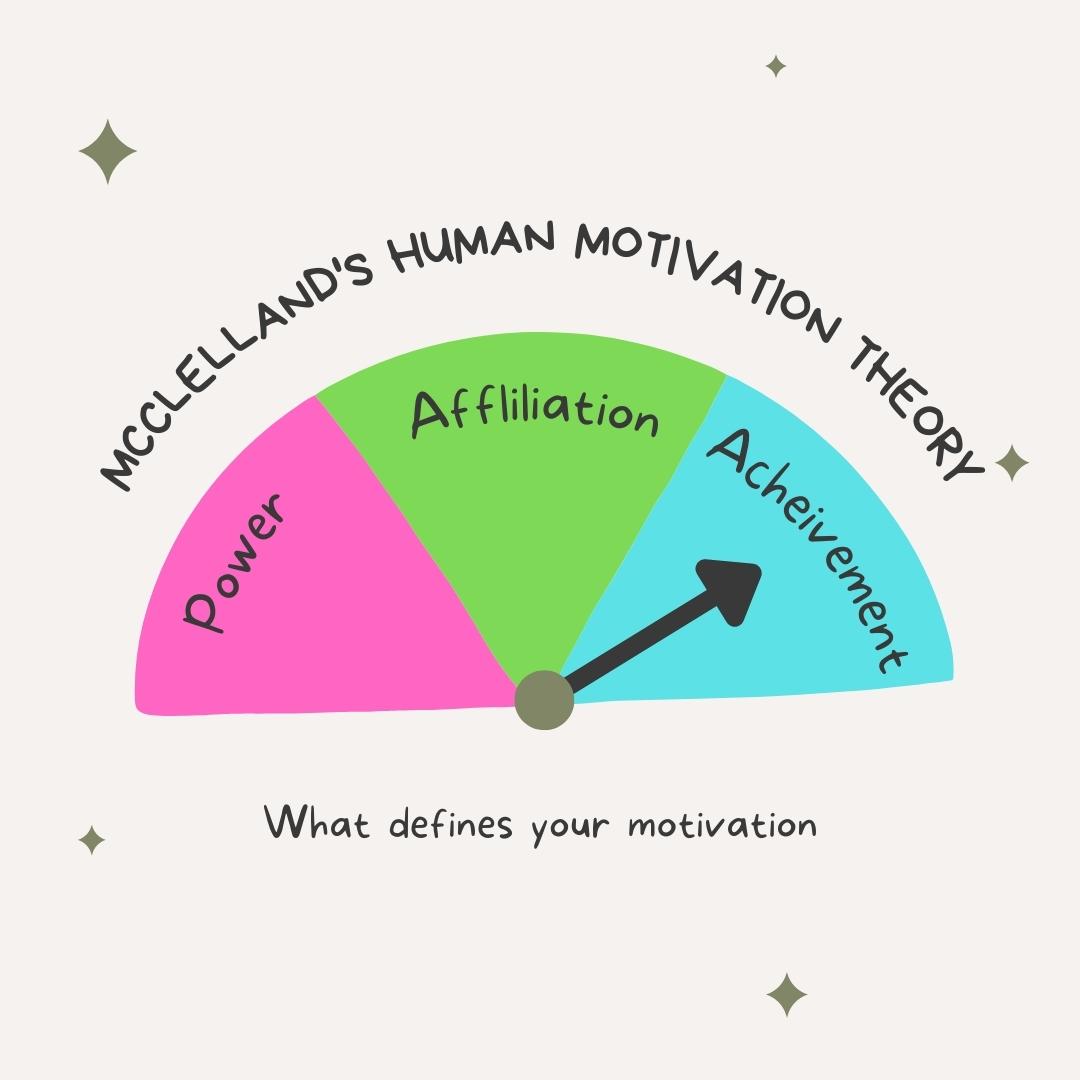Ever wondered why CEOs work 80-hour weeks or why your friend never misses a party?
Renowned Harvard psychologist David McClelland tried to debunk these questions with his theory of motivation built in the 1960s.
In this post, we’ll explore the David McClelland theory to gain deep-level insight into your own drivers and those around you.
His needs theory will be your Rosetta Stone for decoding any motivation💪

Table of Contents
- The David McClelland Theory Explained
- Determine Your Dominant Motivator Quiz
- How to Apply The David McClelland Theory (+Examples)
- Takeaway
- Frequently Asked Questions

Get your Employees Engaged
Start meaningful discussion, get useful feedback and appreciate your employees. Sign up to take free AhaSlides template
🚀 Grab Free Quiz☁️
The David McClelland Theory Explained

In the 1940s, psychologist Abraham Maslow proposed his theory of needs, which introduces the hierarchy of the basic needs that humans have categorised into 5 tiers: psychological, safety, love and belonging, self-esteem and self-actualisation.
Another luminary, David McClelland, built on this foundation in the 1960s. Through analysing thousands of personal stories, McClelland noticed we aren’t just satisficing creatures - there are deeper drives that ignite our fire. He uncovered three core inner needs: a need for achievement, a need for affiliation, and a need for power.
Rather than a born trait, McClelland believed our life experiences shape our dominant need, and we each prioritise one of these three needs above the others.
The characteristics of each dominant motivator are shown below:
| Dominant motivator | Characteristics |
| Need for Achievement (n Ach) | • Self-motivated and driven to set challenging but realistic goals • Seek constant feedback on their performance • Moderate risk-takers who avoid extremely risky or conservative behaviour • Prefer tasks with clearly defined goals and measurable outcomes • Intrinsically motivated rather than by external rewards |
| Need for Power (n Pow) | • Ambitious and desire leadership roles and positions of influence • Competition-oriented and enjoy influencing or impacting others • Potentially authoritarian leadership style focused on power and control • May lack empathy and concern for empowering others • Motivated by winning, status and responsibility |
| Need for Affiliation (n Aff) | • Value warm, friendly social relationships above all else • Cooperative team players who avoid conflict • Motivated by belonging, acceptance and approval from others • Dislike direct competition which threatens relationships • Enjoy collaborative work where they can help and connect with people • May sacrifice individual goals for the sake of group harmony |
Determine Your Dominant Motivator Quiz
To help know your dominant motivator based on the David McClelland theory, we've crafted a short quiz below for reference. Please choose an answer that resonates the most with you in each question:
#1. When completing tasks at work/school, I prefer assignments that:
a) Have clear and defined goals and ways to measure my performance
b) Allow me to influence and lead others
c) Involve collaborating with my peers
#2. When a challenge arises, I am most likely to:
a) Devise a plan to overcome it
b) Assert myself and take charge of the situation
c) Ask others for help and input
#3. I feel most rewarded when my efforts are:
a) Formally recognised for my accomplishments
b) Seen by others as successful/high-status
c) Appreciated by my friends/colleagues
#4. In a group project, my ideal role would be:
a) Managing the task details and timelines
b) Coordinating the team and workload
c) Building rapport within the group
#5. I'm most comfortable with a level of risk that:
a) Might fail but will push my abilities
b) Could give me an advantage over others
c) Unlikely to damage relationships
#6. When working towards a goal, I am primarily driven by:
a) A sense of personal accomplishment
b) Recognition and status
c) Support from others

#7. Competitions and comparisons make me feel:
a) Motivated to perform my best
b) Energised to be the winner
c) Uncomfortable or stressed
#8. The feedback that would mean the most to me is:
a) Objective evaluations of my performance
b) Praise for being influential or in charge
c) Expression of care/appreciation
#9. I am most drawn to roles/jobs that:
a) Allow me to overcome challenging tasks
b) Give me authority over others
c) Involve strong team collaboration
#10. In my free time, I most enjoy:
a) Pursuing self-directed projects
b) Socialising and connecting with others
c) Competitive games/activities
#11. At work, unstructured time is spent:
a) Making plans and setting goals
b) Networking and engaging colleagues
c) Helping and supporting teammates
#12. I recharge most through:
a) A sense of progress on my objectives
b) Feeling respected and looked up to
c) Quality time with friends/family
Scoring: Add up the number of responses for each letter. The letter with the highest score indicates your primary motivator: Mostly a's = n Ach, Mostly b's = n Pow, Mostly c's = n Aff. Please note that this is just one approach and self-reflection provides richer insights.
Interactive Learning at its Best
Add excitement and motivation to your meetings with AhaSlides' dynamic quiz feature💯

How to Apply The David McClelland Theory (+Examples)
You can apply the David McClelland theory in various settings, especially in corporate environments, such as:
• Leadership/management: Great leaders know that to maximise productivity, you need to understand what truly motivates each employee. McClelland's research reveals our unique inner drivers - the need for achievement, power or affiliation.For example: An achievement-oriented manager structures roles to include measurable goals and objectives. Deadlines and feedback are frequent to maximise output.

For example: An employee with high n Pow receives feedback on influence and visibility within the company. Goals centre on advancing to positions of authority.

Takeaway
McClelland’s legacy carries on because relationships, accomplishments and influence continue driving human progress. Most powerfully, his theory becomes a lens for self-discovery. By identifying your foremost motivations, you will flourish in fulfilling work aligned with your intrinsic purpose.
Frequently Asked Questions
What is the theory of motivation?
McClelland’s research identified three core human motivations – need for achievement (nAch), power (nPow) and affiliation (nAff) - that influence workplace behaviour. nAch drives independent goal setting/competition. nPow fuels leadership/influence seeking. nAff inspires teamwork/relationship building. Assessing these "needs" in oneself/others enhances performance, job satisfaction and leadership effectiveness.
Which company uses McClelland's theory of motivation?
Google - They use needs assessments and tailor roles/teams based on strengths in areas like achievement, leadership and collaboration which align with the David McClelland theory.








